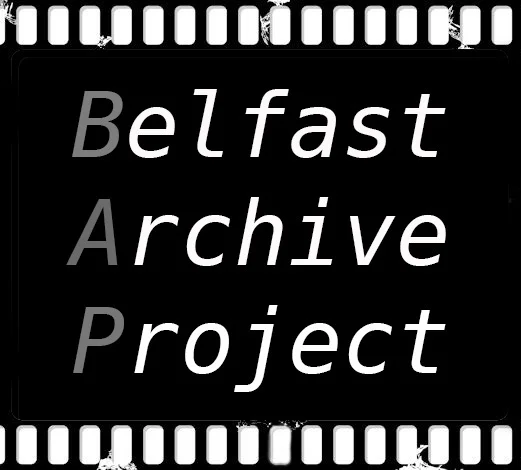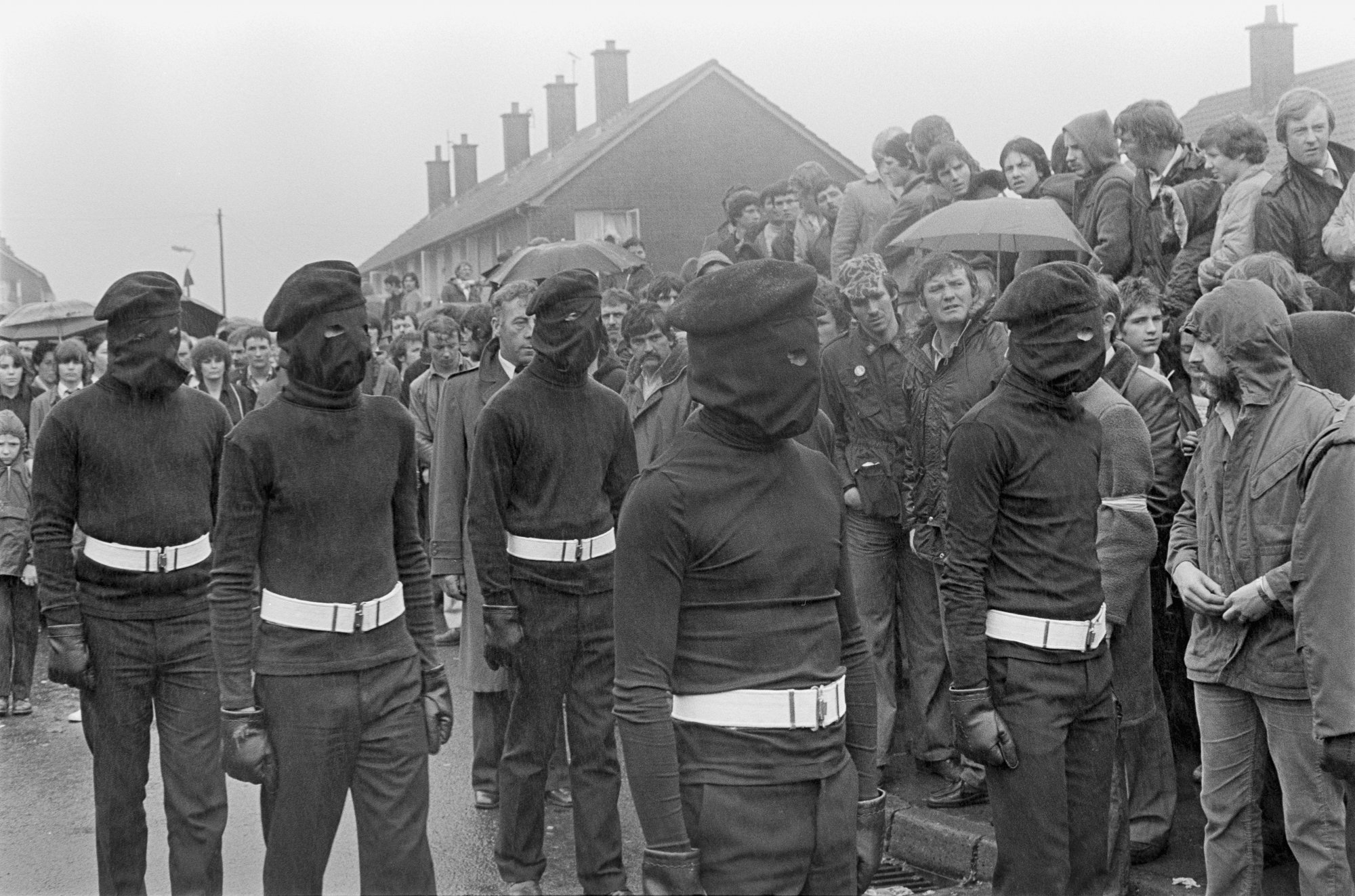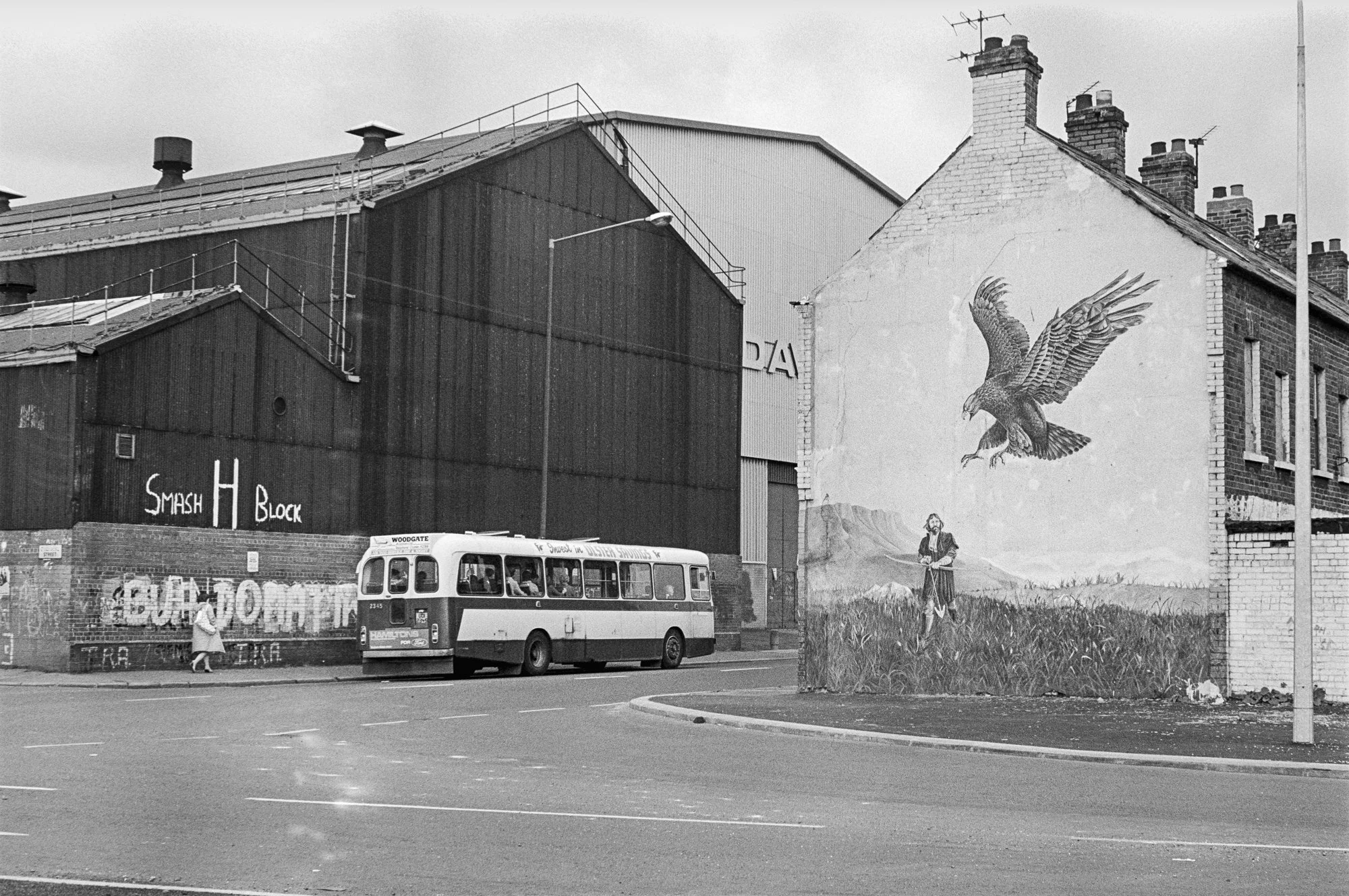Klaus Fröhlich
“The first time I went to Ireland I was a photography student. That was 1979. I had decided to visit Belfast to get an impression of what the conflict is doing with a city. I didn't have a lot of information, just what we had in the newspapers. I was also planning to visit a fishing cooperative in Toombridge on Lough Neagh that I had read about.
The second time I went to Belfast was in 1981. That was the time of the hunger strikes. There was a chance to get a seat on a bus to Michael Devine's funeral in Derry. He had died the week I was taking pictures in Belfast.
My stays in Belfast were only ever for a week. I was still a student and didn't have a lot of money. I was hitchhiking.”
Crown Bar
Divis
Donegall Pass Lower Ormeau, 1979
Donegall Pass Lower Ormeau, 1981
Falls
Funeral of INLA Hunger Striker Michael Devine, Derry, August 22nd 1981
“1981 I was 26 years old and still a student of photography and walking through Belfast taking pictures. I also went several times to Sinn Féin to get information. I was also there the day before the funeral and carefully asked if there was a possibility to go to Derry and take photos there. They got me a seat on a bus. In Derry, I just go with the others. Nobody said anything to me that I shouldn’t take pictures. So, I did it.”
General, 1979
General, 1981
Lower Shankill
Markets, 1979
Markets, 1981
Peat
Ireland is rich in peatlands. Peat was often mined in "plots" for self-sufficiency. For the population it has been an important heating material. There were peat fields all over the country where everyone cut peat for their own use. It was laid out to dry and later stacked. When it was really well dried, it could be used as heating material.
Until 1993 there was still a combined heat and power plant in Allenwood, County Kildare, which was fired with peat. At the beginning (1950s) up to 1800 people worked in the peat fields here, in 1990 only 40. They lived with their families in shanty towns. Later, machines took over the peat extraction and the settlements fell into disrepair. In 1993, the power plant was shut down and demolished.
Peat was used as a raw material in the chemical industry. For example, paraffin was extracted from it or care products were produced. Mixed with horse manure, it was used for breeding mushrooms.
The Grand Canal was an important transport route to get the peat to Dublin. There is still a fuel trade there today, located directly on the canal. It is one of the oldest in the country, established 180 years ago. In 1990 Mr. Gordon sold about 60 tons of peat a year, coal about 1000 tons. Horses pulled the boats across the canal to the town.
The photos shown here were taken on analog film and taken in 1990.
The digitisation of the slides was made possible by a grant from Neustart Kultur, VG Bild/Kunst, Federal Ministry of Culture.
Ring of steel, 1979
Ring of steel, 1981
Sandy Row
Short Strand, 1979
Short Strand, 1981
Smithfield
Turf Lodge flats
Whiterock Road, 1979
Whiterock Road, 1981
100% of every donation goes directly to programming. We deeply appreciate your support!
























































































